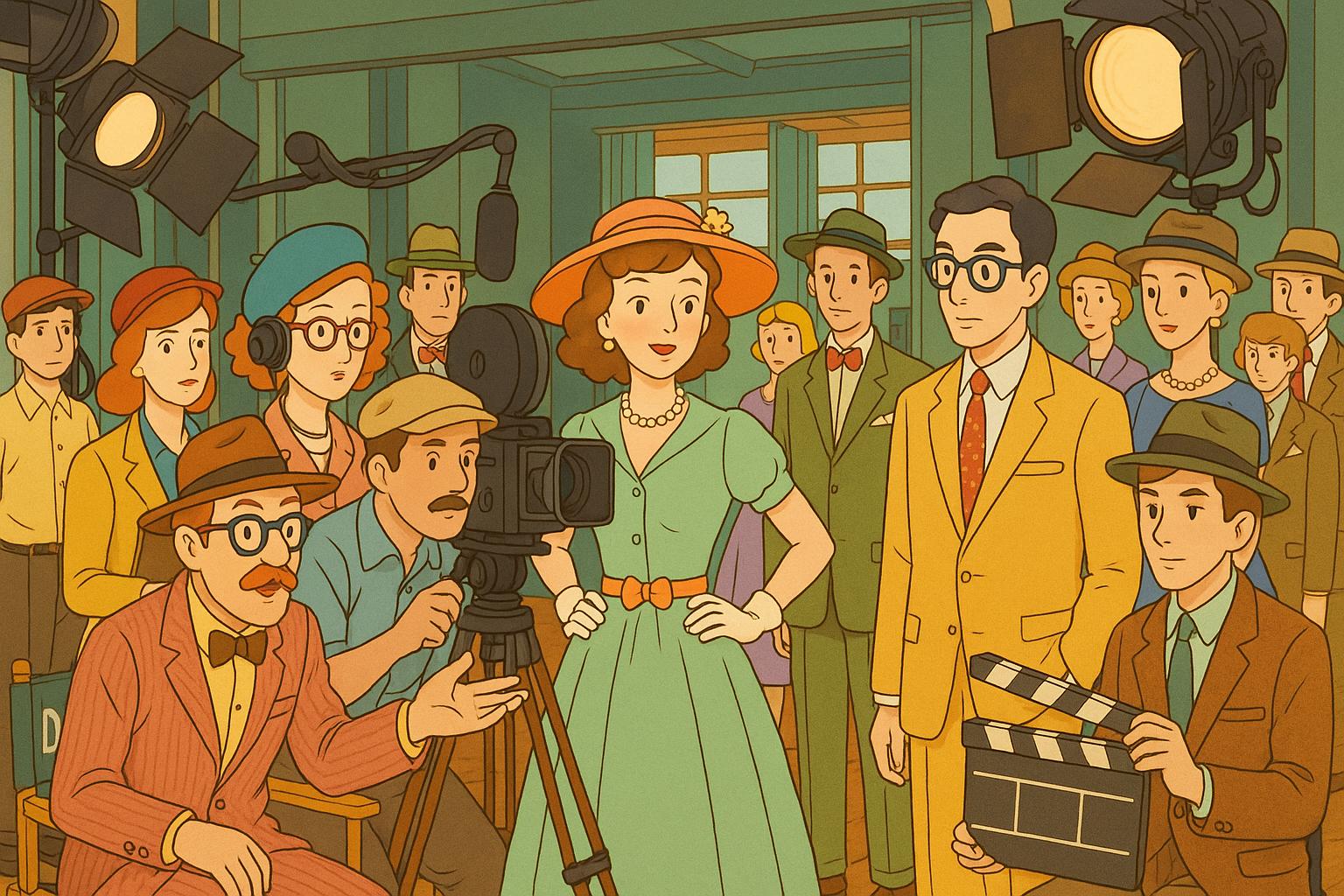The Cannes Film Festival, which draws global attention to the year's cinematic triumphs and controversies, has recently showcased two films that have made their way to UK cinema screens nearly simultaneously. However, while both films began with much fanfare, they have elicited contrasting reactions from critics and audiences alike.
Wes Anderson's "The Phoenician Scheme," featuring an ensemble cast that includes Benicio del Toro, Tom Hanks, Scarlett Johansson, and Bill Murray, has hit the screens with an intriguing premise yet has garnered mixed reviews. Set in the 1950s, the narrative revolves around the wealthy mogul Zsa-Zsa Korda, portrayed by del Toro, who survives a series of assassination attempts while attempting to reconnect with his daughter Liesl, a novice nun played by Mia Threapleton. Observers have noted that the film indulges in Anderson's signature style — characterised by vibrant visuals and a whimsical narrative — but suffers from a lack of depth. While the film commences delightfully, adopting a humorous touch, it quickly descends into a slower and more self-indulgent pace that may alienate viewers who revel in a more cohesive story.
Critics have pointed out that, despite its rich visual aesthetics, the plot remains unengaging for significant stretches, a sentiment echoed by Time magazine, which described the performances and narrative as somewhat understated and lacking in the usual vibrant engagement associated with Anderson's earlier works. This film continues a trend that has surfaced in recent Anderson projects, notably "The French Dispatch" and "Asteroid City," where the intricate web of whimsy occasionally overshadows substance. It appears that Anderson’s approach—while still visually captivating—may be losing its charm among viewers who once adored it.
Contrastingly, the latest entry in the "Mission: Impossible" franchise, "Mission: Impossible – The Final Reckoning," directed by Christopher McQuarrie, has received a more mixed acclaim, primarily for its ambitious scale and breathtaking action sequences. Starring Tom Cruise as Ethan Hunt, the film plunges the audience into a race against a rogue artificial intelligence that threatens world security. With a budget exceeding $400 million, the film ambitiously attempts to tie together multiple narratives from the series' three-decade run. While some critics highlight a tendency for sluggish pacing and convoluted storytelling, others commend the film's high-octane moments, including a breathtaking aerial stunt involving a biplane, which reinforces Cruise's known commitment to perform dangerous stunts himself.
However, reviews suggest that the film, while visually spectacular, is often bogged down by unnecessary weighty dialogue that detracts from its entertainment value. Some critics have called for a more streamlined narrative that prioritises the adrenaline-fueled escapism that has been a hallmark of the franchise, reflecting on how excessive seriousness can hinder the sheer enjoyment expected from such a film.
In a notable departure, Guy Ritchie's "Fountain Of Youth" offers a refreshing tonal contrast, delivering a fun and light-hearted experience amidst the other two serious offerings. Featuring John Krasinski and Natalie Portman in lead roles, the film weaves a whimsical tale of art theft that playfully engages with themes of familial bonds and unexpected twists. By not taking itself too seriously—unlike its more ponderous counterparts—it demonstrates how levity and charm can captivate audiences and provide an alternative viewpoint amid the heavy narratives dominating the festival.
Ultimately, the Cannes showcase has underscored the divided reception of cinematic offerings in modern filmmaking, with Wes Anderson’s latest effort highlighting both the charm and challenges of maintaining an iconic style, while the "Mission: Impossible" franchise showcases the balancing act between epic spectacle and coherent narrative. Ritchie’s film serves as a reminder that sometimes, embracing levity can lead to memorable storytelling, a sentiment that resonates deeply in today’s rapidly evolving cinematic landscape. This year’s festival highlights the importance of variety in viewer experience, revealing that while some cinematic styles thrive, others may need to evolve lest they risk alienating their audience.
Reference Map
- Paragraph 1: 1
- Paragraph 2: 1, 2, 4
- Paragraph 3: 1, 2, 4
- Paragraph 4: 3, 7
- Paragraph 5: 6, 5
- Paragraph 6: 1, 4, 6
Source: Noah Wire Services
